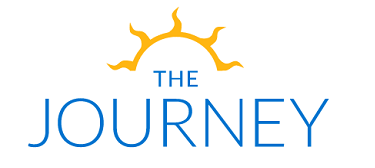It’s critical to make a plan in advance for achieving your goals. Every company must keep an inventory to meet customer demand as it arises, and a demand-driven inventory planning produces profitability and flexibility along the whole supply chain. Through accurate demand forecasting, replenishment planning’s primary goal is to assure order fulfillment while lowering waste output.
Supply networks around the globe are currently dealing with extraordinary swings in demand. Vendors and retail establishments find it challenging to meet this demand if accurate replenishment planning is not carried out. Planning for replenishment is, therefore, necessary and aids businesses in restocking sold-out merchandise. However, replenishment planning is a complex procedure considering factors such as local vendors, product seasonality, customer demographics, cost, availability, and so on.
What Is Replenishment Planning?
The process of replenishment planning is finding a balance between inventory needs and customer service requirements. Replenishment, to put it simply, is the process of placing new orders for in-demand inventory that is either low on supply or out of stock.
Planning for replenishment synchronizes customer demand with an organization’s manufacturing, distribution, and procurement capabilities and enables a company to react quickly to shifting demands. The purpose of replenishment is to ensure that the store always has the appropriate quantity of products at the appropriate location at the appropriate time to lower costs and increase sales.
The following things are decided through replenishment planning:
- How to profitably restock inventories all year long.
- What quantities need to be ordered again?
- Which supplier or shipper should be chosen?
- How often should stocks be ordered?
- Stockouts, undesired markdowns, and overall costs can also be reduced.
How Does Replenishment Planning Operate?
Replenishment is a complex procedure that considers several variables. It requires effective demand planning that predicts how much inventory will be needed in the upcoming months, where the greatest demand is, and when to place a replenishment order. Replenishment planning is a straightforward operation for small enterprises and shops that sell goods to one or two locations. You can plan the replenishment process in Excel with a precise and current count of your inventory and sales. Predicting how long the current stock will last helps you place replenishment orders before stockouts happen. Small shops do not have multiple supply chains, making it possible to schedule prices and delivery.
The complexity of the replenishing process across many locations and channels increases as the organization expands. Large firms must estimate demand for each store and distribution center independently rather than forecasting demand for a single store carrying a specific set of products. Your demand is influenced by various elements in every channel and location, such as regional rivals, demography, product seasonality, consumer preferences, shipping costs, shipment times, distance from the distribution center, and more.
Most businesses use sophisticated algorithms and predictive analytics to estimate future demand based on existing sales data. Planning for replenishment should take into account each order’s anticipated lead time. The lead time is when an order is placed, and the inventory is filled. Lead time estimations should consider the time needed for producing, packaging, and shipping the inventory and the time required to handle the delivery after it arrives, depending on the type of business. Depending on the specific items, lead times can vary and should be considered.
Shipping distances, purchasing discounts for bulk orders, the requirement for safety stock, vendor quantity restrictions, and other elements affecting delivery and overall costs are additional considerations influencing replenishment planning. Replenishment planning should consider unusual circumstances, including discount offers, product seasonality, nearby rivals, new shop openings, client demographics, and more.
The Necessity of Planning for Resupply
Replenishment planning has many advantages for businesses. Inventory planning is essential, and businesses shouldn’t overlook it because it can boost sales while reducing waste and losses. Companies can gain the following advantages through replenishment planning:
- Reduce stock outs by placing new orders only when necessary.
- Reduce logistics paths and combine orders to lower shipping costs.
- You can get rid of needless locked-up resources by just ordering merchandise with market demand.
- Ensuring each store has a replenishment strategy can minimize the costs associated with store transfers.
By effectively scheduling replenishment orders, replenishment strives to maintain a steady flow of products across the supply chain. Without effective inventory replenishment, businesses may put their resources and success rate at risk. Retailers may run out of popular products or raw materials, causing delays in production at a manufacturer or vice versa. Customers may switch to other brands, which could hurt brand loyalty and result in lost sales and revenue.
Robust replenishment planning helps to prevent stockouts while saving money by not having to store extra inventory.
Advantages of Balanced Inventory
Planning your inventory helps firms boost their profit margins and ensure that orders can be fulfilled on time. Planning your inventory can help with:
- Reduced Inventory Cost – Understanding stock patterns enables you to better utilize the stock by seeing how much and where you have it in stock in real-time. As you can anticipate forecasts in advance, you can retain less inventory at each site, reducing the cost tied up in inventory. Additionally, it reduces the quantity of stock waste before sales.
- High Availability – Replenishment planning allows you to stock inventory optimally thereby ensuring high availability. Customers want their requests to be fulfilled quickly. Making sure customers receive the things as soon as they request them is one strategy to maintain their loyalty.
- Improve Cash Flow – With accurate replenishment planning, you can utilize money on sales inventory to ensure a smooth cash flow.
About the Company
When the reorder point is reached, Fountain9’s replenishment planning software, Kronoscope, automatically places replenishment orders. Kronoscope also provides supplier metrics information which can help you to choose the right vendors/suppliers based on the lead time, pricing and various other metrics. With the software’s help, you can maintain an ideal inventory level to fulfill customer demand when it arises at the right time.

